
Identities in Crises (2019)
Research project exploring the expression, performance and function of identity in social contexts.
Final project produced for the MA Graphic Media Design course at the London College of Communication.
CONCEPT ART
POSTER DESIGN
ARTWORKING
We have grown used to the eyes that surround us. Terrified of being dissected, we defend ourselves by finding ways of being more likeable. Identity becomes a performance, acted out for the audience’s applause.
‘Identities in Crises’ are identical voices that scream at each other without ever trying to listen. They are shy men and vainglorious divas, endlessly performative bodies that have forgotten how to exist when no one is watching.
From my conscious performances to my body language, I turned every rock that might hold the key to the secret of ‘me’. I gave pieces of myself to strangers so they might tell me the answer. Instead, they wore my skin under their own, engulfing me in the cloud of ‘me’ that surrounds them.
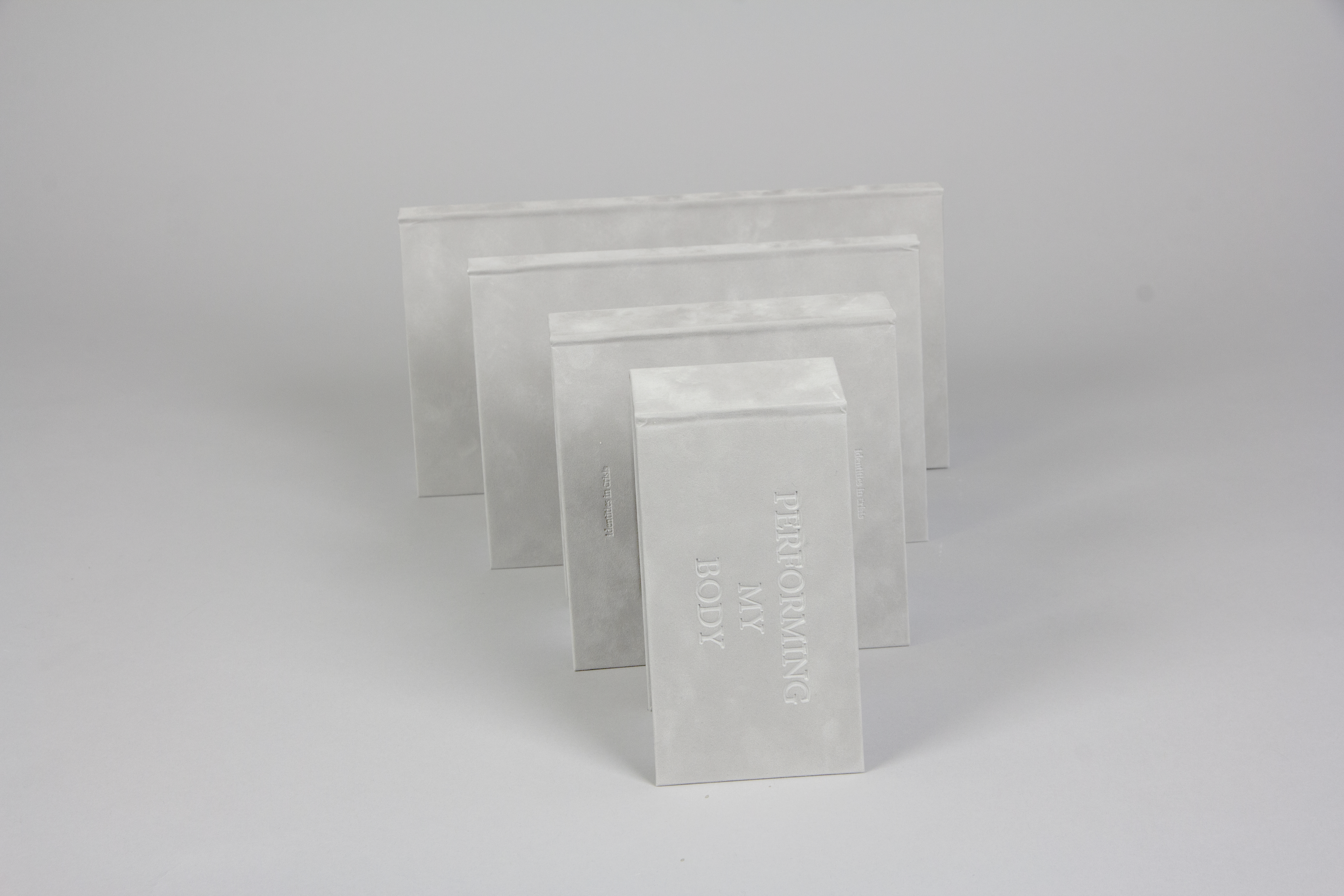
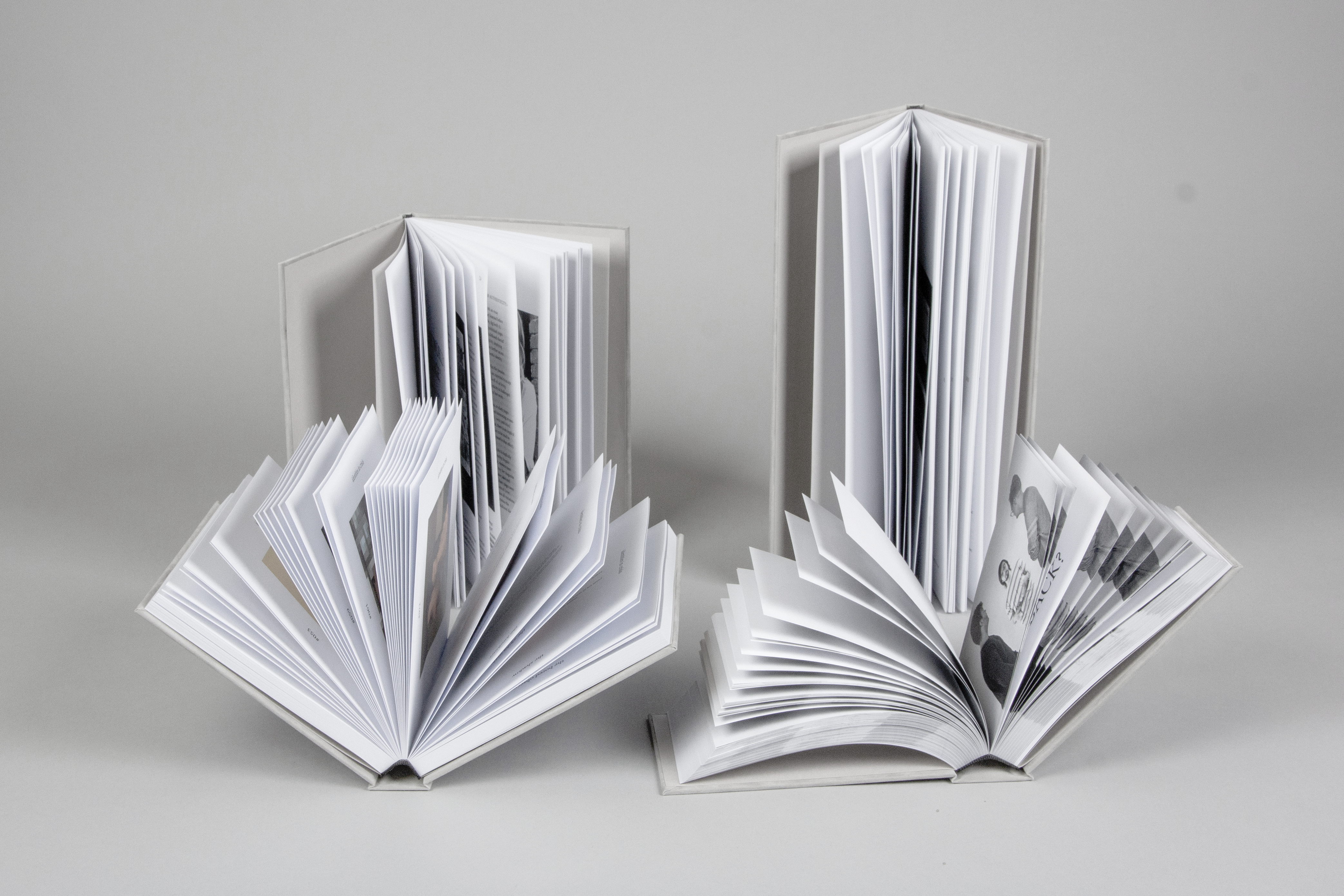

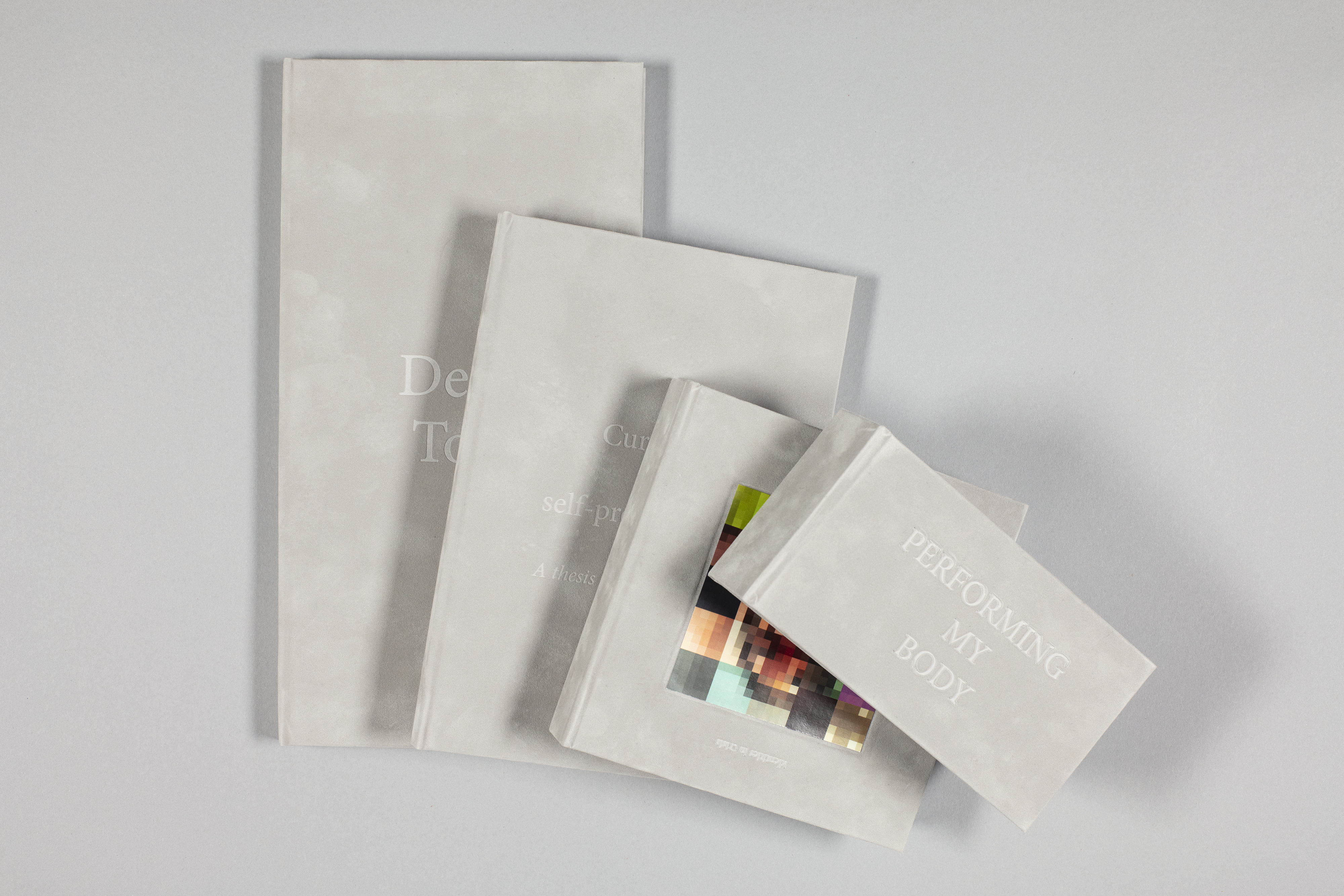
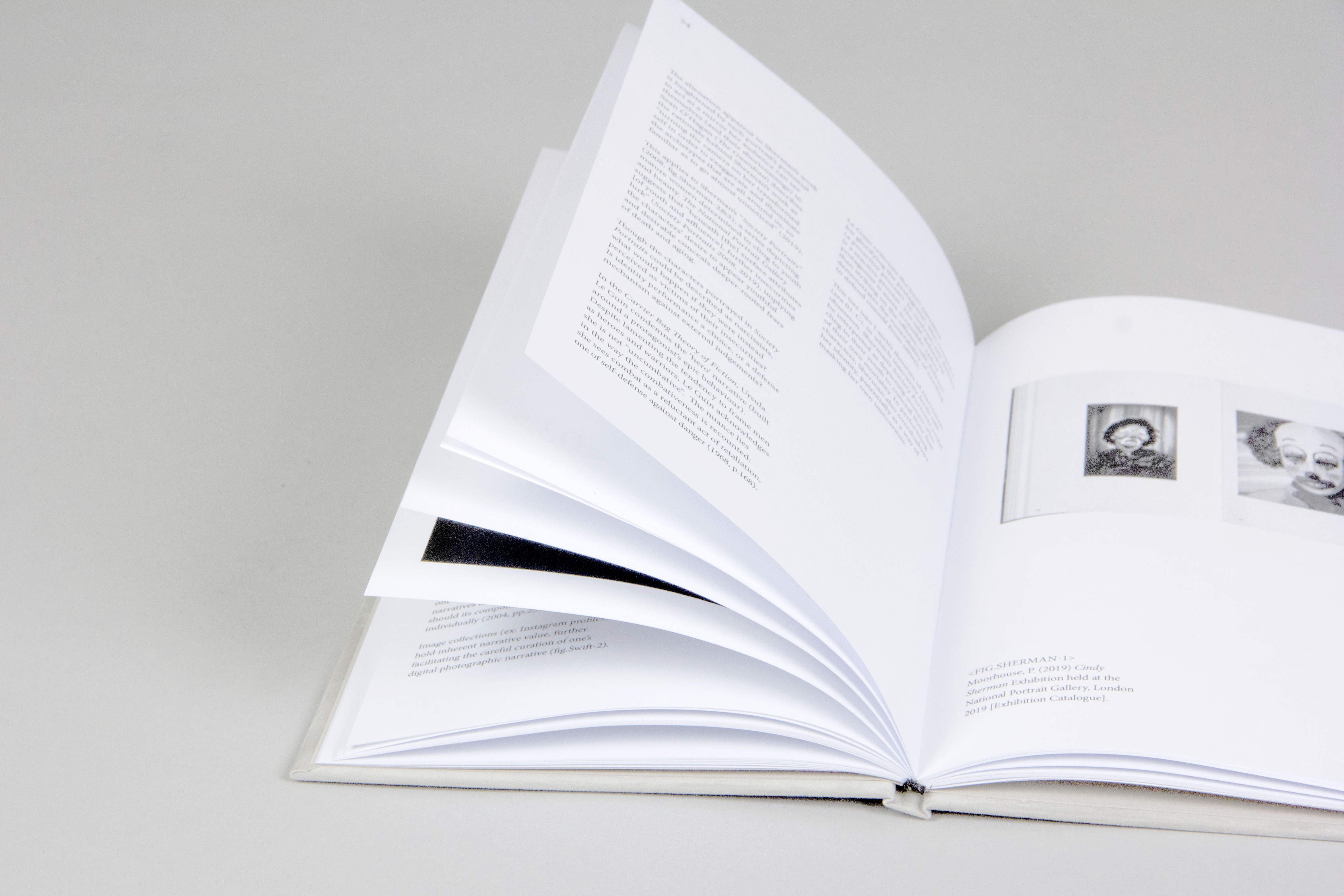



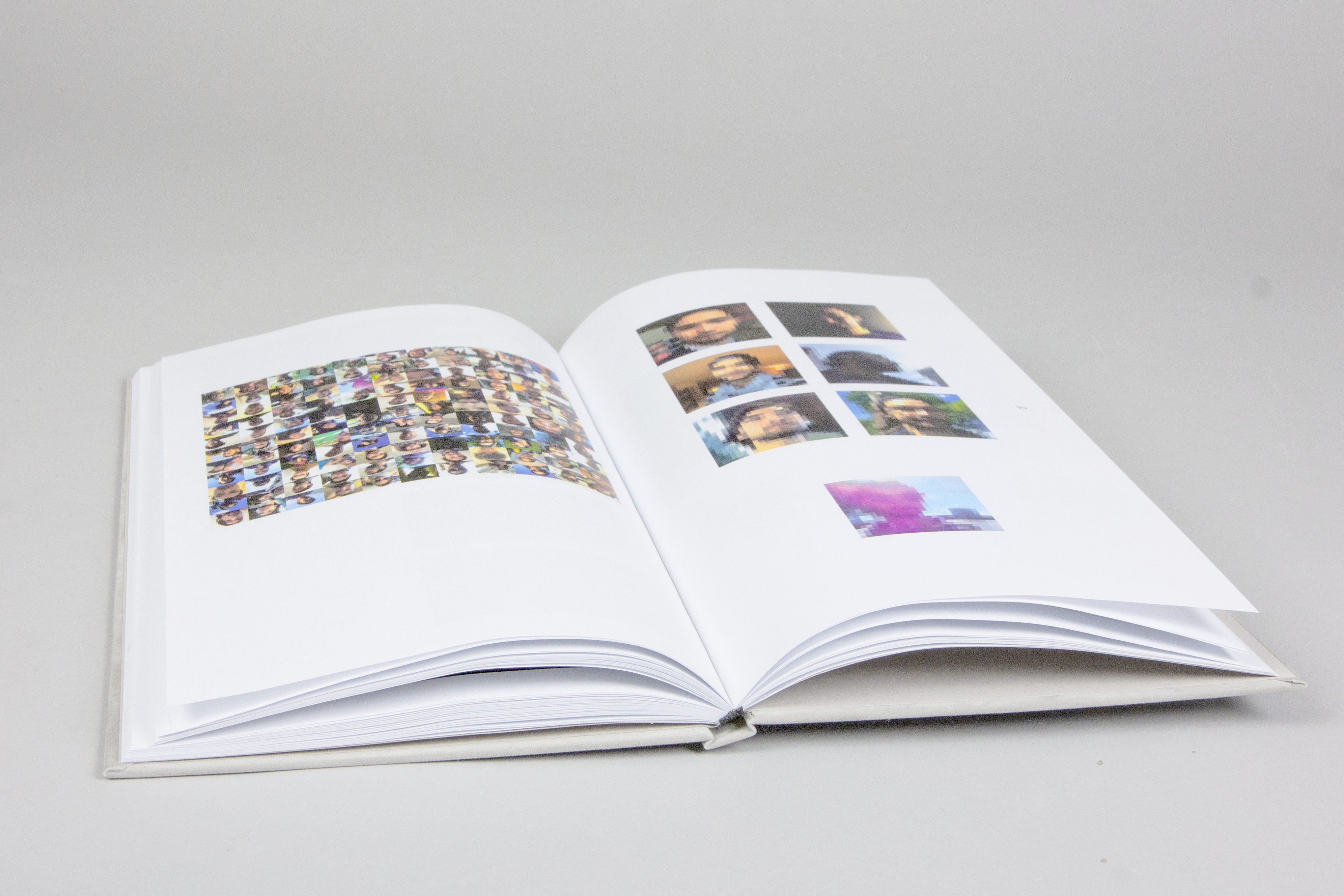

The finished outcomes were presented across four different hardcover publications, each of the same width but of varying heights and page numbers, symbolising how identities are multi-faceted and layered.
The books were bound with a grey velvet-like fabric hardcover to create a neutral outcome that would gather fingerprints and markings from the audiences browsing the publication.
Design rationale




IDENTITIES IN CRISIS
BOOK ONE
PERFORMING MY BODY
BOOK TWO
CURATION OF SELF-PRESERVATION
BOOK THREE
DESK TOP
BOOK FOUR






(a) Choose a character and introduce him to the audience (monologue).
(b) Improvise a conversation between two characters of your choice (dialogue).
(c) Discussion about the project's objectives (conversation with the subject).
(d) Following the discussion, perform ‘me’ (Ferdinand) to the audience (monologue).
(x) Sample page of the character roles provided for the workshop.
(y) The entire workshop was filmed with a second camera.
The identity workshop
Do you feel as though you are more than just another person?
Do you enjoy being at the centre of attention?
Do you feel as though you are destined for greatness?
The world has changed.
It is now possible to achieve immortality.
To grasp at the stars within your reach.
To be followed and adulated by legions of worshippers.
To inscribe your name into the history books that generations of students will analyse.
Do not be afraid of establishing your legacy.
Embrace your destiny.
Become a character today.
Choose the identity that fills you with pride and share it with the world.
Now is the time to unleash your truest self upon society.
Are you secretly an artist?
Do you have the soul of a revolutionary?
Have poems been written about your magnetic charm?
Share your brightest talents with the world today.
Write a description of all the characters that you are. Describe your plans for the future, your deepest hopes and your wildest dreams.
Your time to act is now.
Once you are pleased with the identity you have built for yourself, find an actor to bring your character to life.
Let the actor study you, as if you were the role of a lifetime.
Consider the tone of their voice.
The language of their body.
The passionate dialogue.
You will most likely want to repeat the experiment to try out a different identity or a different actor.
Do not be afraid of being a perfectionist: this is your opportunity to define the person you would like to immortalise in your peers' memories.
Which role would you rather people remember after your dying breath?
Is it the manipulator?
The deceiver?
The professor?
The commander?
Or the lover?
Or is it a character you have never revealed before?
One you hold close and dear to your heart?
Do not be afraid.
Reveal yourself.
Become a legend.
BECOME A LEGEND*
*HOW TO WEAPONISE YOUR IDENTITIES INTO SOCIAL CURRENCY. A MANIFESTO.
Research through selfies
Distributing identity
The collection of roles generated for BOOK ONE was given to actors who were tasked with bringing those characters to life through improvisation.
The goal was to explore how identity could be repurposed as a role or as a tool, and what the reinterpretations of these characters through the actors' improvised performances might say about the original subject.









Research through selfies
I analysed my selfies to study the different roles and characters I was embodying in each image. The images were then pixellated, expressing how each of these portraits are incomplete depictions of the person photographed.




Following the workshop, footage (c) was analysed. Beyond the conscious performance of identity (what to say and how) was the unconscious performance of the body (blinking, breathing, crossing arms, etc.)
I analysed my body language and exposed my findings into a flip book (BOOK TWO), concealing the instructions on how to perform my body between the animated pages.



Body performance
I WOULD LIKE TO THANK MYSELF FOR MY CONSISTENT NARCISSISM.
CURATION OF THE SELF
A process by which an individual’s identity is carefully designed and calculated (rather than spontaneously expressed).
RESEARCH ENQUIRY
To what extent does digital technology encourage the curation of the self? If identity is merely a role we perform in social spaces, can identities be repurposed as roles to be performed by others?






The mirror image
121 photographs were analysed and written up as character roles. The roles and images were assembled in a book designed like a mirror, enabling the book to be read in both directions.
In the linear reading order, the reader discovers all the personas before meeting the true self: the dreaming subject when he is unconscious, and therefore, not performing. In the inverted order, the reader meets the dreaming subject first, before encountering the different personas he is dreaming up.





Artists and identity
In BOOK THREE, the following artists were analysed for the different ways in which identity is expressed or harnessed through their work:
(01) Taylor Swift intends to seem "approachable and relatable". Yet where is the line between authenticity and performance?
(02) Cindy Sherman performs countless fictional identities in her "self-portraits". Who is the real Cindy Sherman?
(03) Sophie Calle invites others to collaborate into shaping her identity: how do they make sense of her pain, of her experiences, of her?

Research journey
BOOK FOUR presents the different research strands followed throughout the project.
Each spread recycles an image from a previous spread in the exact same position, to show how the project grew from the findings it generated.
When a dead end was met, a previous thread was picked up and re-examined in hopes of discovering new findings.